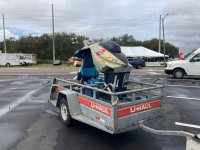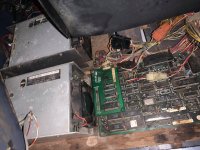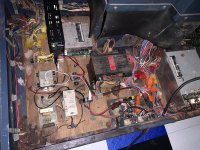ArcadeMachinist
Professional
I would be posting some pictures of my current restoration project.
SEGA G-Loc Deluxe flight simulator - R360's smaller brother.
Got this machine with completly dead lower part, looks like sometime ago it was stored outside (rust and corrosion) and it was home for a rat family too (major parts of wiring eaten away).
As of now it is playable, but no motion.
One of it's two motor driver boards needs new (custom) transformer.
Also some cosmetics, like seat plastic (fibegass now) needs more sanding and paint.
It was taken apart completly for restoration (and to fit my door).



SEGA G-Loc Deluxe flight simulator - R360's smaller brother.
Got this machine with completly dead lower part, looks like sometime ago it was stored outside (rust and corrosion) and it was home for a rat family too (major parts of wiring eaten away).
As of now it is playable, but no motion.
One of it's two motor driver boards needs new (custom) transformer.
Also some cosmetics, like seat plastic (fibegass now) needs more sanding and paint.
It was taken apart completly for restoration (and to fit my door).



Last edited:






































 Very similar to a full size PowerDrift I saw in november... and left there!
Very similar to a full size PowerDrift I saw in november... and left there!








